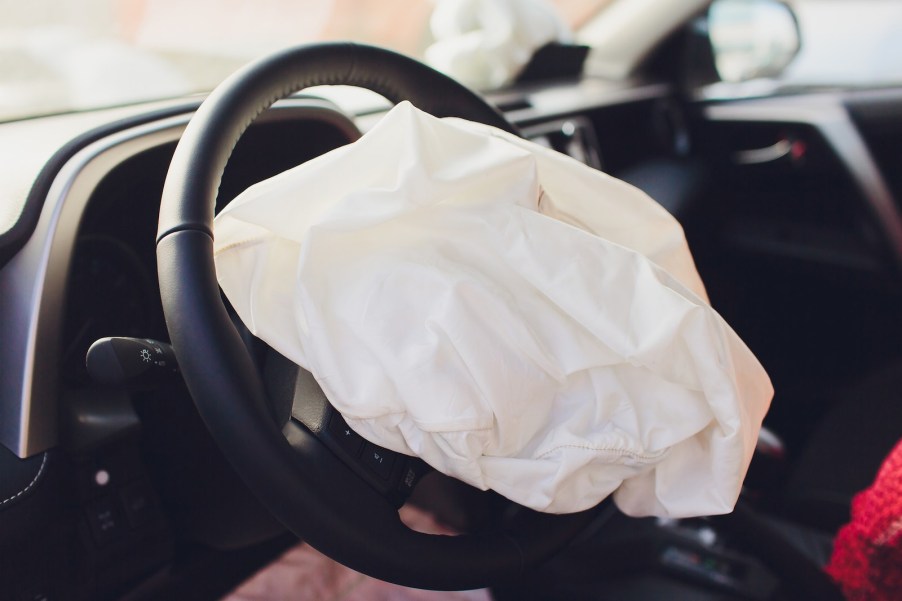
What to Do After Your Airbag Goes Off
Airbags were an incredible leap forward in car safety. As scary as it is to have an airbag deploy in your face, it is much better than bouncing your noggin off the dashboard or windshield. That said, airbags can daze and even injure you. Whether you are in a multi-car accident or just hit a curb, here’s what to do if your airbag deploys.
I only had my airbag go off once, when I slid off a snowy road during the winter. But I’ll tell you it is disorienting. Luckily I was fine, but here’s what I learned from the experience.
First: Safely park your car and shut off the engine. Most vehicles have a safety switch which will turn off the engine if the airbag deploys. But if this safety measure deploys, its important you park immediately and turn your engine off. If you are in rapidly moving traffic and about to be rear-ended, perhaps steer for the shoulder. But in all other instances, it is better to stop where you are.
Why do you want to shut your engine off? Because after an accident, your vehicle could be leaking fuel, and a big fuel leak is an explosion risk. Switching off your car–and its fuel pump–may prevent it from leaking. You’ll want to examine your car carefully before starting it again.

Second: You’ll want to examine yourself for injuries. You may have a bloody or broken nose. You may be suffering a concussion. You may have severe bruises on your chest or hips from your seat belt. Depending on your vehicle, your legs may be injured from striking the dashboard. One surprise for me was how sore my hands and wrists were because I had been holding the steering wheel. You should examine your legs and body for quickly growing bruises or blood blisters that indicate internal bleeding. Finally, you want to be extremely careful of spinal injury.
This is a great time for you to enlist help, either from onlookers or emergency personnel. If anyone who stops to help has mechanical knowledge, they can examine your car to make certain its safe for you to stay put. The 911 dispatcher can walk you through checking yourself and your passengers for injuries while you wait for trained professionals to arrive.
Third: Call a tow. If medical professionals arrive and give you a clear bill of health, you have the unenviable problem of deciding what to do with your crashed car. If you have AAA, you can call them for a tow. Your insurance company may offer a similar “roadside assistance” service, so it’s not a bad idea to call them and check. They can also walk you through how best to document the accident before you make a claim.
After an accident, a car that looks “okay” can have invisible damage to the powertrain, brakes, or suspension which make it unsafe to drive. So even if you’re feeling gung-ho, don’t put yourself and others at risk by trying to drive home.
[Sources: AAA, AutoStreamCarCare]
Next, find out if you’re truly ready to change a tire by the side of the road, or watch how airbags work in the video below:





